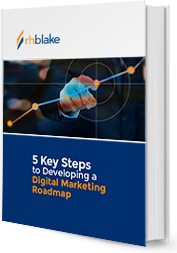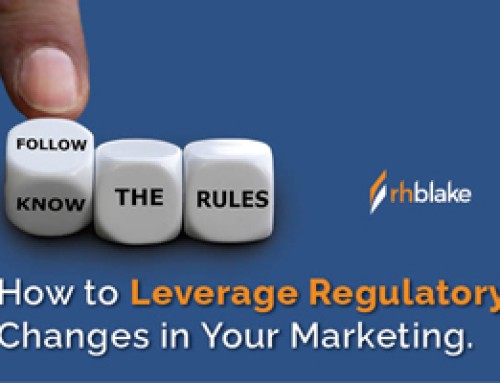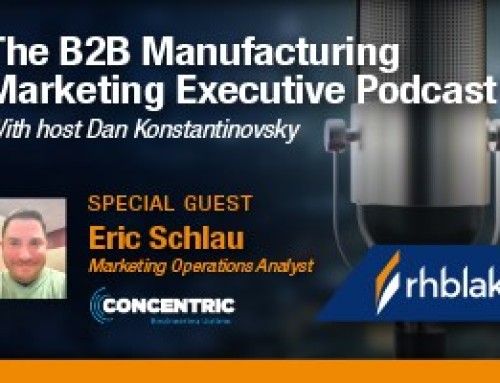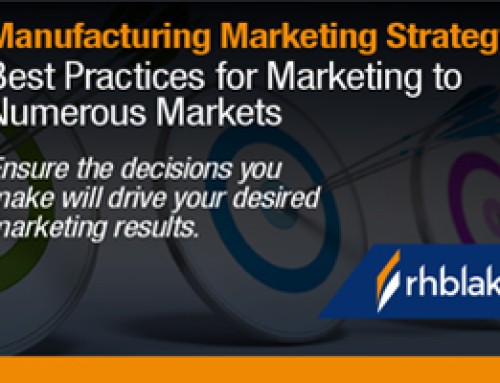Industrial Marketing Best Practices Multiple Personas In One Organization
Written by Dan Konstantinovsky
Strategic Marketing, RH Blake
![]()
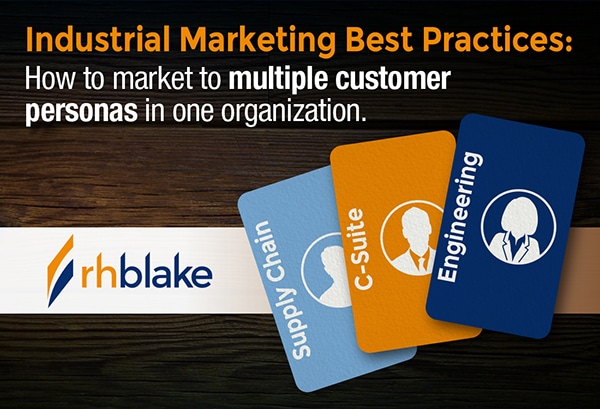
Many times, one “customer” for marketers of complex industrial offerings is actually multiple individuals with different roles and responsibilities within a targeted organization.
The sales cycle for these types of solutions is typically long, and it can carry a relatively high price tag. It’s clearly understandable why these purchases are normally evaluated by multiple stakeholders before a decision is made. Further, they’re often advances that represent a new way of thinking, so educating and competing against the status quo are also critical parts of the selling process.
Further complicating the sales opportunity, these stakeholders often view the purchase through their own, distinct lens. Their marketing personas are different…if not contrasting. Therefore, each one might require a distinct targeting and engagement approach.
Herein lies the challenge for industrial marketers: selling one offering to one organization, but needing to effectively educate and position your offering to multiple stakeholders, each with their own agendas, personalities and levels of influence in the organization.
Industrial Marketing Best Practices Multiple Personas In One Organization
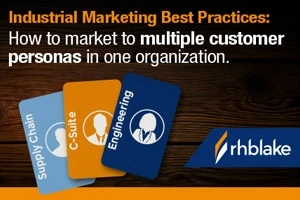 Written by Dan Konstantinovsky
Written by Dan Konstantinovsky
Strategic Marketing, RH Blake
![]()
Many times, one “customer” for marketers of complex industrial offerings is actually multiple individuals with different roles and responsibilities within a targeted organization.
The sales cycle for these types of solutions is typically long, and it can carry a relatively high price tag. It’s clearly understandable why these purchases are normally evaluated by multiple stakeholders before a decision is made. Further, they’re often advances that represent a new way of thinking, so educating and competing against the status quo are also critical parts of the selling process.
Further complicating the sales opportunity, these stakeholders often view the purchase through their own, distinct lens. Their marketing personas are different…if not contrasting. Therefore, each one might require a distinct targeting and engagement approach.
Herein lies the challenge for industrial marketers: selling one offering to one organization, but needing to effectively educate and position your offering to multiple stakeholders, each with their own agendas, personalities and levels of influence in the organization.
But how do you market and create relationships with others in the organization who also require buy-in on the purchase without compromising your main contact?
These others might have a more direct impact on the purchasing decision so they can’t be ignored. Their motivations in how they evaluate the offering are likely different, too. Considerations could be price-based, quality and reliability-based, safetybased or track record-based. Or they could simply have a strong loyalty to the existing supplier.
It’s a delicate line to walk to avoid the perception that you’re minimizing your contact’s authority and influence, but it’s imperative to keep the sales process moving along…and in your favor.
requires thoughtful and helpful Manufacturing content marketing.
When done right, you can actually collaborate with your Engineering contact on your relationship building efforts. Consider arming them with the tools– and words – to strengthen their recommendation and help communicate your offering further and wider in the organization.
Here are two best practices to consider:
1. Persona-based content
Develop content for each stakeholder that specifically discusses their challenges and how your solution can help address them (e.g., “5 things every CFO needs to know about offering X” or “How offering X can minimize risk for CFOs”). Offer these content assets to your Engineering contact to share within their organization.
Identify relevant stakeholders and develop target customer personas for each. A customer persona is a snapshot of a target audience based on common traits that are validated by data.
Going through this exercise will help you determine the right messaging and the most appropriate deliverable for each one. For optimal results, it’s best to customize and personalize content to where a person falls in their respective buying journeys. Then execute.
2. Peer-to-peer stakeholder contact
As part of your sales process, develop and communicate a step that includes connecting your stakeholders with the prospect’s stakeholders. For example, after an identified level of interest has been shown by the primary target persona, take an additional step that connects your CFO to the prospect’s CFO; peer to peer.
Position it as part of the overall education process to ensure fit. “Can I arrange a call between our respective CFOs? I’m sure there are some cost-benefit questions your CFO has that ours can answer for them. Over the years we’ve found that involving other functions in the education process of what our offering provides – including from a total cost of ownership perspective – may help identify fit and overcome potential obstacles.”
As a side benefit to this strategy, note that 44 percent of B2B buyers switched sellers in the past 12 months (Accenture). By tactfully developing relationships with other stakeholders, you have the opportunity to better demonstrate the value you’re providing to the customer. In turn, you’re reducing the risk of the customer looking for a different supplier.
marketing challenge, you don’t have to go it alone.
RH Blake helps manufacturing and industrial organizations navigate long sales cycles every day through a blend of strategic marketing strategies and programs that apply to all stops along the customer journey.


